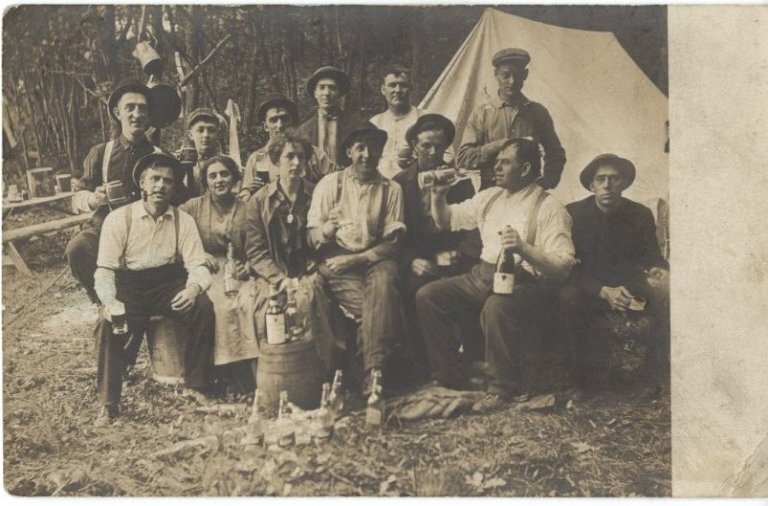Baseball Memories
Written by Elaine Rybak Clyborne Barber, Sept 23, 2018 for the opening of “Play Ball: Sports in Scott County”
New Prague, 1914. Photo from the SCHS Collections.
My childhood was filled with the connection of my family members and the athletic traditions of my home town, New Prague. This is the reason for my writing out my memories for this special event at the Scott County Historical Society and the program on small town baseball. But first, a short history of how my family came to Scott County. My family had arrived in Minnesota from the Austrian Hungarian Empire, a part now known as the Czech Republic, to Scott County in 1865. They were looking to escape the military duties of their homeland, and they were seeking opportunities to seek their fortune and a better life for their families. They settled in Nova Praha, New Prague after the journey from the small villages southwest of Vesili, which is south of Praha in Bohemia.
My family came to New Prague not as farmers, but as trade workers and merchants to supply the needs of the growing farming community surrounding the town. The first man of the Rybak family was a blacksmith, but the next generation of men started stores and saloons in the town. By the early 1900s my grandfather opened a brewery in New Prague named the OK brewery. This company closed during the Prohibition years, and they went into making their own flavors of soda pop under the name of Rybak’s bottling Works, which also distributed Schmidt Beer after the Prohibition years ended.
My father and his two brothers were educated in the New Prague schools and were active in various town activities. It was my father, Mathew Albert Rybak known as Mike who was very interested in athletic events. He belonged to the Sokol club (gymnastic society) and played football, but his passion was for baseball. He was featured in the recent 2018 Minnesota State Amateur Baseball publication which was printed for the tournament when New Prague, Jordan and Shakopee hosted the tournament games.
There are photographs of him at bat as a young man and another one of my mother, Clara Rybak, and I standing in front of the score board dedicated to him at a field named for him after his death in 1953. His statistic were also printed in that publication, but there were many years when he was still playing that did not make the book. I am so delighted that I have the 1921-1922 score book records of the town games against Jordan, Chaska and other small towns- many of them in Le Seuer.
One of the things that I am most proud of in my life was his dedication to organizing the town team when WW2 ended. He supported that town team as a player, a manager, and in a financial way. It was during those years when I followed the games that I began keeping score myself, which I still do to this day when I watch the Twins playing. When he died, the headlines on the New Prague Times read “Mr Baseball Dies. Mick’s Bat is Silent”.
Over time repairs were needed at the Mike Rybak Memorial Park near the golf course in New Prague. The score board was replaced with an electronic one and the name was changed to the Memorial Park, honoring all the people including the vets who played on that field.
In preparation for the state tournament many things were upgraded and improved! But my memories of the importance of sharing time with my mother and father at that field are rich and precious in my memory bank. those were the good old days of my childhood.













